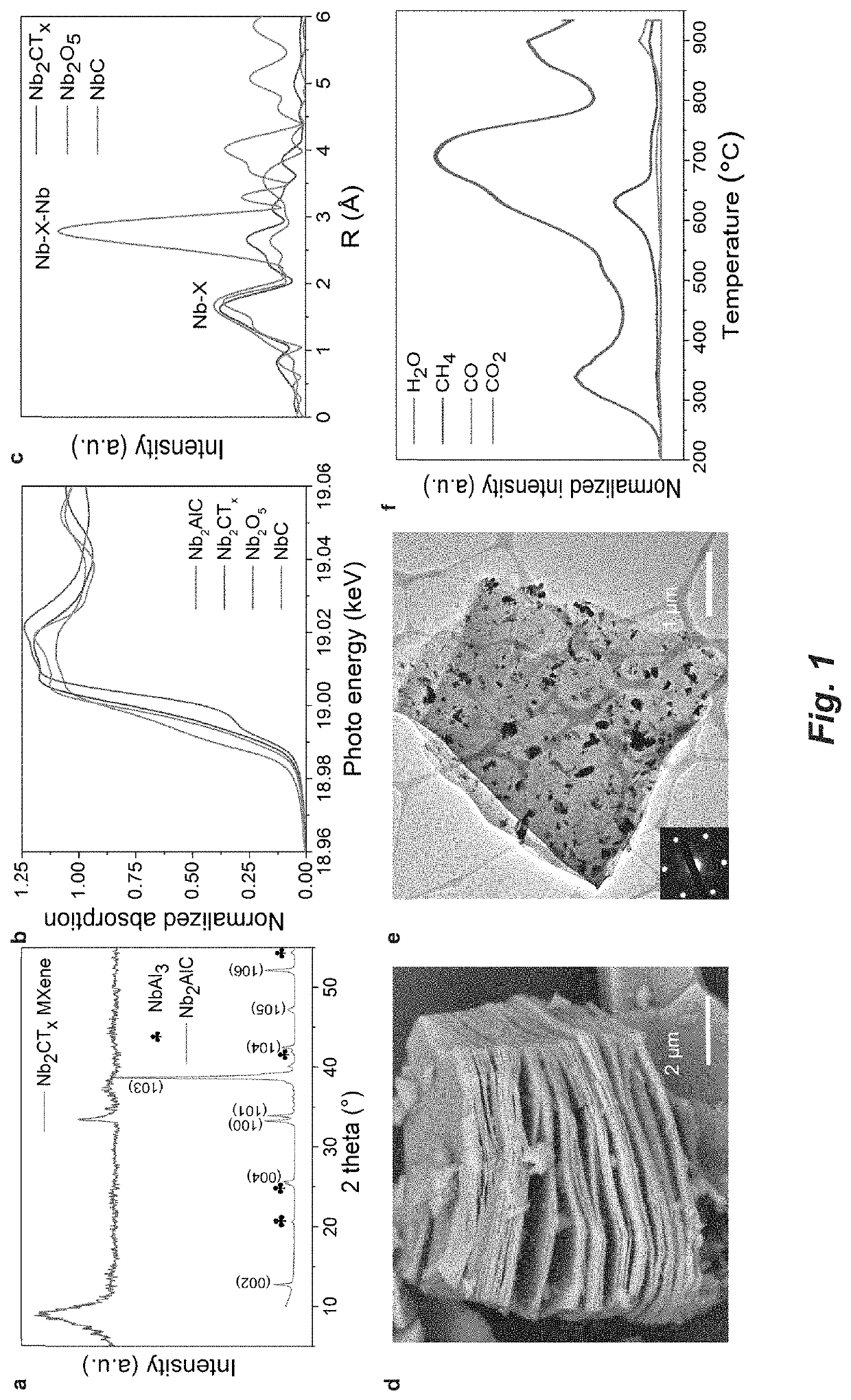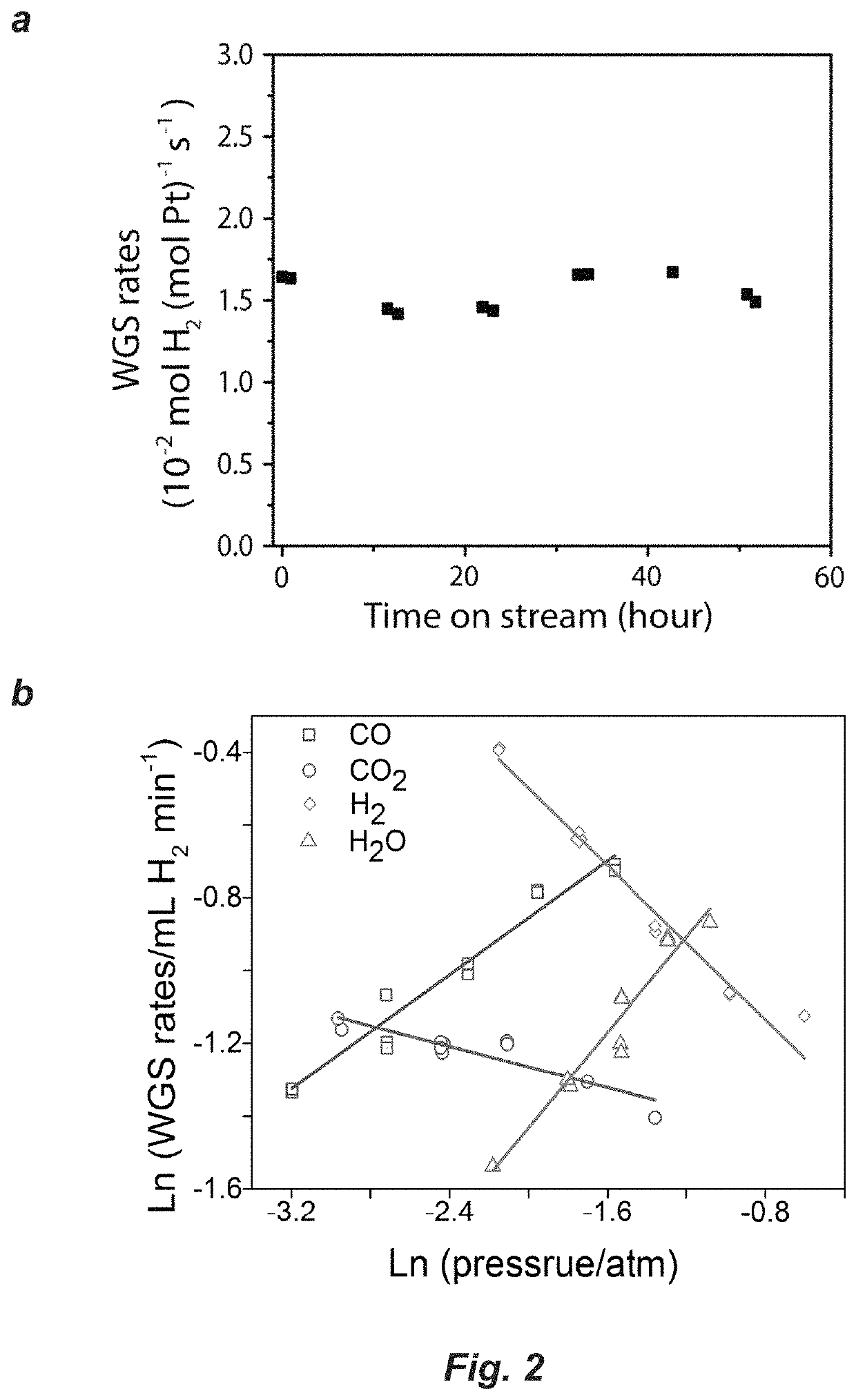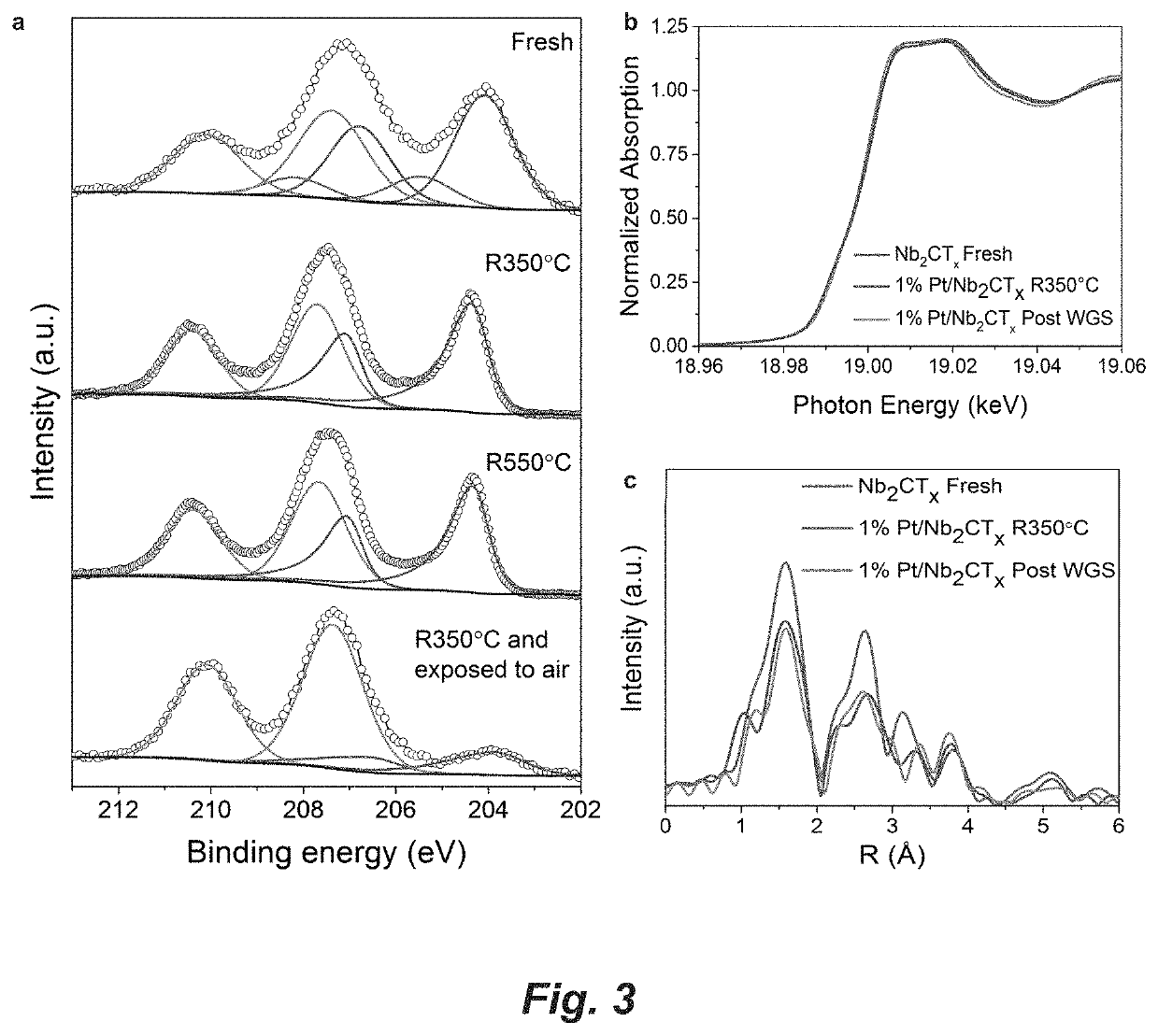Two-dimensional metal carbide catalyst
a metal carbide catalyst, two-dimensional technology, applied in the direction of metal/metal-oxide/metal-hydroxide catalysts, physical/chemical process catalysts, metal/metal-oxide/metal-hydroxide catalysts, etc., can solve the problem of difficult reduction, strong oxyphilicity and resistance, and the preparation of nps consisting of early tms, etc. problems, to achieve the effect of high rate and stability, high temperature without loss
- Summary
- Abstract
- Description
- Claims
- Application Information
AI Technical Summary
Benefits of technology
Problems solved by technology
Method used
Image
Examples
example 1
Preparation
[0107]Synthesis of Nb2AlC phase: The Nb2AlC powder is synthesized by spark plasma sintering (SPS) of Nb / Al / graphite mixtures. In detail, commercial powders of Niobium (99.8%, 325 mesh), graphite (99%, 7-11 μm) and aluminum (99.5%, 325 mesh) were mixed with a molar ratio of Nb:Al:C=2:1.4:0.9 in a graphite die coated with boron nitride (BN). Excess Al and less graphite were added because Al will be lost during high-temperature processing and carbon deficiencies exists in most Al-containing MAX phases. Then the tooling was loaded in a Fuji-211lx SPS system and sintered at 1500° C. under 30 MPa for one hour. The resulting Nb2AlC was then pulverized and sieved through a 325-mesh screen.
[0108]Preparation of Nb2CTx MXene: Roughly 1 g of the prepared Nb2AlC powder was immersed into 10 mL of 50% aqueous hydrofluoric acid (HF) solution for around 3 days at 55° C. The resulting MXene suspension was repeatedly washed with deionized water (DI) and centrifuged at 8900 rpm until the pH ...
example 2
nt of the WGS Reaction Kinetics
[0114]The WGS reaction was measured in a parallel plug flow reactor which was described previously (Bollmann et al., J. Catal. 257, 43-54 (2008)). The WGS reaction rates were measured under differential conditions, namely conversion was maintained below 10% and the products of the WGS reaction (CO2 and H2) were also co-fed. The WGS rate was expressed in a power rate law as below:
[0115]r=Aexp(-EappRT)[CO]a[CO2]b[H2]c[H2O]d(1-β)(1)
where r is the overall rate, A and Eapp are the apparent pre-exponential factor and activation energy for the forward rate, a, b, c and d are forward reaction orders, β=([CO2][H2]) / (Keq[CO][H2O]) is the approach to equilibrium, which measures the deviance from the equilibrium conditions and Keq is the equilibrium constant for the WGS reaction. At the WGS conditions tested here, β<<1, implying the reaction is far from equilibrium.
[0116]For each measurement, c.a. 300 mg of the as-prepared Pt / Nb2CTx catalyst was loaded...
example 3
izations
[0117]Powder X-ray diffraction (XRD) was carried out on a Rigaku Ultima U4 diffractometer, with Cu Kα radiation (λ=1.5418 Å), at 40 kV and 44 mA. Scanning Microscopy (SEM) was acquired on a FEI Quanta 250. HAADF-STEM imaging was conducted on a Titan Themis 300 probe corrected TEM equipped with a Super-X EDX detector from Sensitive Instrument Facility (SIF) of Ames Lab.
[0118]Pt loading of the Pt / Nb2CTx catalyst was determined by atomic absorption spectroscopy (AAS). Specifically, the catalyst was digested (2 mL / 1 mL / 100 mg=aqua regia / HF / catalyst) in a Nalgene® amber polyethylene bottle for 3 days and the solution was then diluted to desired concentration for the AAS measurement.
[0119]H2 temperature programmed reduction (TPR) experiment was performed with an Autochem 2000 unit. About 70 mg catalyst was loaded in the unit and dried in 50 sccm He at 200° C. overnight. Then the catalyst was cooled to room temperature and purged with pure H2. The temperature was ramped from room t...
PUM
 Login to View More
Login to View More Abstract
Description
Claims
Application Information
 Login to View More
Login to View More - R&D
- Intellectual Property
- Life Sciences
- Materials
- Tech Scout
- Unparalleled Data Quality
- Higher Quality Content
- 60% Fewer Hallucinations
Browse by: Latest US Patents, China's latest patents, Technical Efficacy Thesaurus, Application Domain, Technology Topic, Popular Technical Reports.
© 2025 PatSnap. All rights reserved.Legal|Privacy policy|Modern Slavery Act Transparency Statement|Sitemap|About US| Contact US: help@patsnap.com



